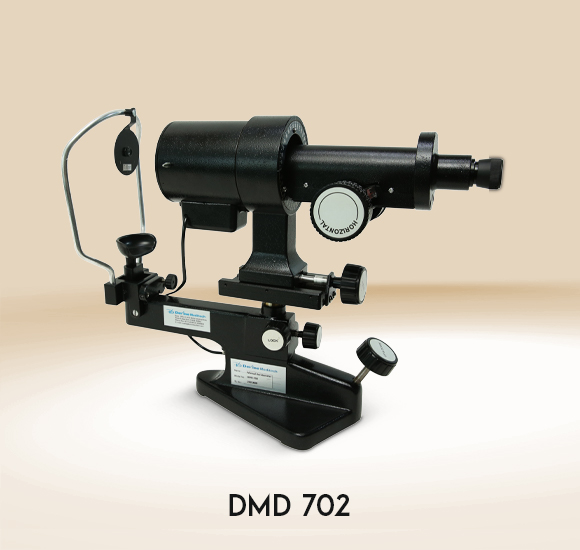
In Ophthalmology, keratometer measure the curvature of corneas, which are transparent front parts of the eye that cover the iris and pupil. The keratometer is particularly useful in determining the shape and size of the cornea, providing important information for the diagnosis and management of various eye conditions, especially those related to refractive errors.
The keratometer works by projecting a series of illuminated rings onto the cornea. The reflections of these rings are observed through the device, and the instrument calculates the corneal curvature based on the size and shape of the reflected rings. Curvature information helps eye care professionals determine the appropriate prescription for corrective lenses or assess a patient's suitability for certain surgical procedures.
• The keratometer uses a series of concentric circles or rings that are reflected on the cornea.
• By noticing the distortion of these rings on the cornea's surface, the curvature of the cornea can be determined.
• The keratometer measures two principal meridians of the cornea, usually at a 90-degree angle to each other. These measurements are often expressed in dioptres (D) or millimetres (mm) and help determine the amount of astigmatism present.
• Astigmatism is a common refractive error where the cornea has an irregular shape, resulting in blurred or distorted vision. A keratometer helps in identifying the axis and magnitude of astigmatism.
• Keratometry is crucial in fitting contact lenses, as it provides information about the corneal curvature, aiding in the selection of the appropriate lens size and type.
The keratometer operates based on the principle of reflection. By focusing on the reflection of light on the cornea, the instrument measures the radius of curvature of the central and peripheral areas. This data aids optometrists in understanding the shape of the cornea, which is crucial for accurate prescription of corrective lenses.
• Measuring range is 6.5mm~9.5mm
• Resolution of curvature radius of cornea is 0.01 mm
• Measurement deviation of the main meridian axial position is ± 2°
• a single measuring time is 0.03s g.
• Output: wireless infrared thermal printer
• Observe the eye directly through the screen.
• Weight: <0.5Kg(with batteries)
• Static Water Contact angle on the Surface is >90°
• Dimension is 240mmx90mmx60mm
• Power is 500mW+15%
In the ever-evolving landscape of optometry, the Keratometer or ophthalmometer stands as a stalwart tool in providing precise measurements of corneal curvature. Its applications range from contact lens fitting to refractive surgery assessments, making it an indispensable instrument for eye care professionals. As technology advances, we can anticipate further refinements in keratometry techniques, enhancing our ability to offer personalized and effective vision care.